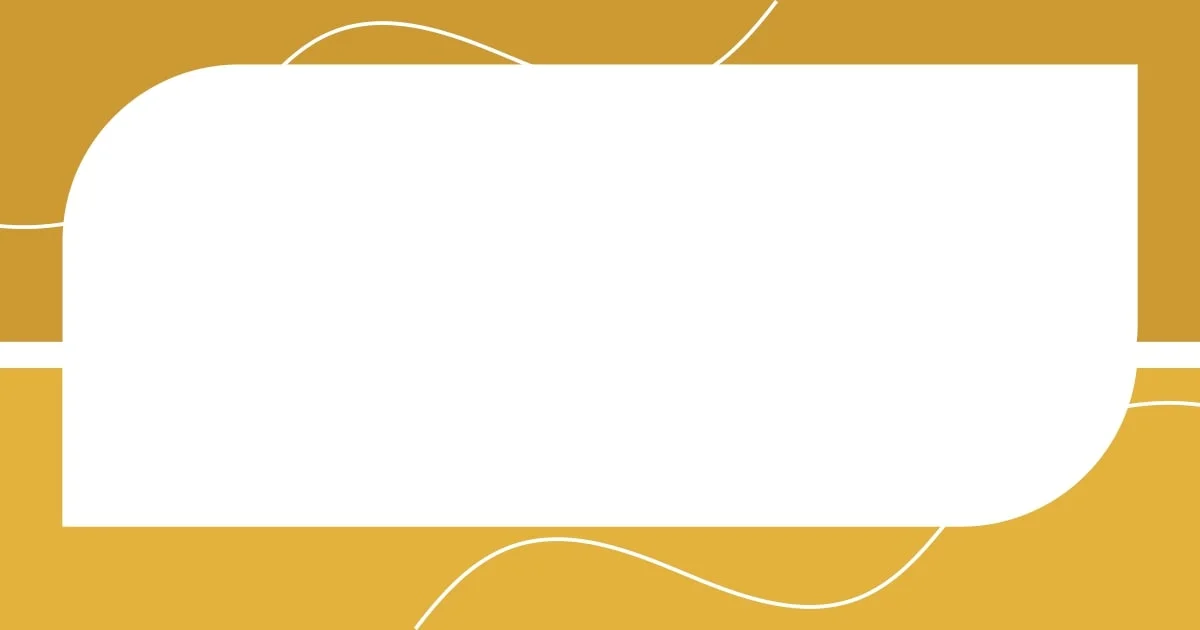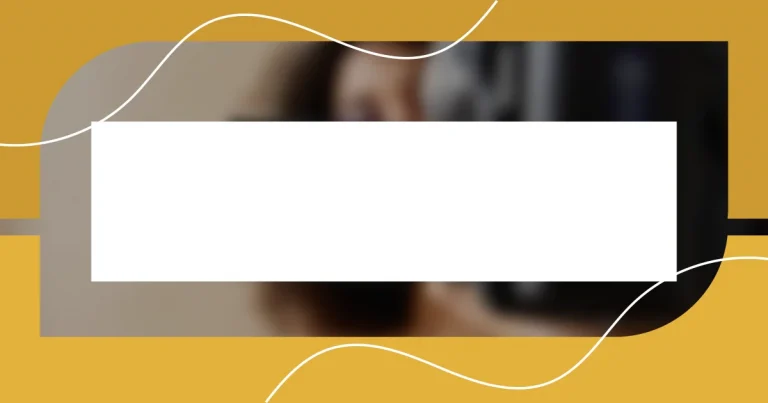Key takeaways:
- Utilizing natural lighting and understanding different conditions can significantly enhance the mood and texture of fashion photographs.
- Choosing the right equipment, particularly lenses and lighting tools, is essential for capturing high-quality images that convey a creative vision.
- Experimenting with composition techniques, color theory, and movement can transform ordinary shots into dynamic and engaging narratives in fashion photography.

Understanding Fashion Photography Techniques
Fashion photography techniques encompass a range of methods that bring garments and accessories to life in striking ways. I remember the first time I experimented with natural light during a shoot; capturing the model in the golden hour made the textures of the fabric truly pop. It’s fascinating how something as simple as timing can transform a photograph from ordinary to extraordinary.
One technique I often admire is the use of dynamic angles. Have you ever considered how a slight shift in perspective could entirely change the mood of an image? When I shot a campaign for a local designer, I tilted my camera just a bit to create an edgy, dramatic effect. The results left both me and the designer breathless. It’s moments like these that remind me that breaking the rules can lead to breathtaking creativity.
Then, there’s the art of storytelling through styling. In my experience, a well-curated outfit can evoke powerful emotions and narratives. For instance, during a recent editorial shoot, choosing a vintage-inspired wardrobe against an urban backdrop told a story of contrast—old meeting new. I couldn’t help but feel a profound connection to the history behind each piece, which added depth to the entire session. Isn’t it incredible how fashion can speak volumes without a single word?

Choosing the Right Equipment
Choosing the right equipment can make a world of difference in capturing that perfect shot. I still vividly remember my first professional fashion shoot where I underestimated the impact of my lens choice. Opting for a prime lens over a kit lens transformed my images, providing a stunning depth of field that beautifully separated my model from the background. The crisp focus on the details of the fabric truly made the collection shine.
When selecting gear, consider these essential pieces:
- Camera body: A full-frame DSLR or mirrorless camera is ideal for high-quality images.
- Lenses: Wide-aperture prime lenses, like a 50mm or 85mm, are fantastic for portraits and capturing rich textures.
- Tripod: A sturdy tripod is invaluable for stable shots, particularly in low-light environments.
- Lighting equipment: Natural light is great, but off-camera flashes or softboxes can create incredible effects, especially in controlled environments.
- Reflectors: They help bounce light back onto your subject, enhancing visibility in shadowed areas.
By investing in the right tools, I’ve found my creative vision comes to life much more vibrantly, allowing every photo to tell a richer story.

Mastering Natural Lighting
Mastering natural lighting is all about understanding its nuances and how it impacts your shots. I had one memorable session at a rooftop location just as the sun set; the way the light cascaded over the model’s face created an ethereal glow that was simply magical. I realized that by positioning the model in relation to the light source, I could accentuate the fabric’s color and texture, turning an ordinary moment into an unforgettable one.
I’ve also found that observing weather conditions can dramatically affect a shoot. On a cloudy day, for example, soft, diffused light envelops the subject, reducing harsh shadows and highlights. I remember a rainy afternoon where I captured a fabulous editorial; the overcast sky lent a moody feel that complemented the dramatic styling of the shoot. Have you ever tried shooting in similar conditions? It’s fascinating how the atmosphere can dictate the mood of your images in such a powerful way.
To hone my skills, I experimented with different times of day, learning that each hour brings its own unique qualities. There’s this sweet spot called the “golden hour,” right before sunset, that adds warmth and depth. One evening, I chased the fading light, and the resulting pictures captured a dreamlike quality I never expected. In mastering natural lighting, it’s these little details and experiences that truly elevate your photography.
| Lighting Conditions | Effects |
|---|---|
| Golden Hour | Warm, soft light that enhances colors and creates beautiful shadows |
| Overcast | Soft, diffused light that reduces shadows and flattens texture |
| Direct Sunlight | Harsh shadows and high contrast, often requiring careful positioning |
| Twilight | Mysterious and dramatic, perfect for moody shots |

Exploring Composition Techniques
When it comes to composition techniques, I find that balancing elements within the frame can truly transform a photo. I remember a shoot where I followed the rule of thirds; placing my model slightly off-center created an intriguing sense of movement that drew the viewer’s eye across the image. It’s fascinating how such a small shift can make a significant impact—have you ever noticed this in your own work?
Another technique I often explore is leading lines. During a recent outdoor shoot, I positioned my model near a long pathway that receded into the background. The lines naturally pulled the observer’s gaze toward her, creating depth and interest. I felt a rush of excitement when I reviewed those shots; they had a dynamic quality that really captured the essence of the moment.
I’ve also had great success using symmetry to create striking visuals. One afternoon, I stumbled upon a beautiful building with a mirrored reflection in a puddle. By framing the shot to include both the literal and reflective elements, I produced an image that felt almost surreal. It was a real ‘aha’ moment—sometimes the most unexpected sources of inspiration lead to the most captivating compositions. How often do you experiment with different compositional frameworks in your photos? It can completely shift your creative perspective!

Utilizing Color Theory in Fashion

Utilizing color theory in fashion photography is like wielding a powerful tool that can influence emotions and perceptions. I distinctly recall a vibrant photoshoot where I dressed my model in bright yellow against a backdrop of deep blue. The contrast was electrifying; it not only made the image pop but also evoked a sense of joy and energy that felt almost palpable. Have you ever noticed how certain colors can uplift your mood instantly? It’s amazing how thoughtful color choices can elevate an ordinary shot into something extraordinary.
Another time, I experimented with complementary colors, pairing warm earth tones with cool, watery hues. The effect was stunning, creating a visual harmony that resonated deeply with the viewer. I remember reviewing those images and feeling a warm sense of satisfaction, as if I had struck the perfect chord in a piece of music. How do you feel about color pairings in your own work? It can truly spark a connection that transcends the visual, pulling the viewer into the story I wanted to tell.
In my experience, understanding the emotions that different colors evoke is key to crafting compelling fashion narratives. For example, using rich reds and deep purples can impart a sense of luxury and passion, while soft pastels often convey calmness and whimsy. One memorable shoot involved a dreamy palette that consisted of pastel pinks and greens, creating a serene dreamlike quality that left a lasting impression. It’s moments like these that remind me of the immense potential colors have to shape our perception—what shade do you believe best captures the mood you want to convey?

Incorporating Movement in Photography
Incorporating movement into fashion photography can elevate a static image into a vibrant narrative. I often find myself capturing a model mid-twirl, the fabric billowing around her, creating a sense of energy that feels alive. It’s incredible how a fleeting moment can transform an entire frame—have you experienced this rush when you snap a shot that just clicks?
I recall a session where I experimented with dance as a way to incorporate movement. As I directed the model to leap and sway, there was something truly magical about the carefree spirit she exuded. Those images not only conveyed dynamic motion but also told a story of freedom and joy. It got me thinking—how often do you allow spontaneity to guide your shoots? Sometimes the best moments happen when we let go of rigid planning.
Another technique I embrace is using slow shutter speeds to create intentional motion blur. During a twilight shoot, I captured a bustling street scene where my model walked through with purpose. The resulting image revealed a ghostly trail of her movement against the dimming lights, compelling the viewer to feel the energy of that moment. Have you ever tried playing with shutter speeds to capture movement? It can lead to some truly unexpected and captivating results!

Editing Techniques for Fashion Photos
When it comes to editing fashion photos, I often dive into color grading to enhance the mood I want to convey. Recently, I worked on a series where I pushed warm tones to create an inviting ambiance. I can still see the final product in my mind—those golden hues wrapping around the model like a warm embrace, making it impossible for the viewer not to feel a sense of comfort. Have you ever noticed how altering colors can change the entire vibe of your work?
Additionally, I find that retouching plays a crucial role in achieving that polished look. For instance, I once spent hours removing distracting blemishes and perfecting the model’s skin texture, ensuring that the final photo matched the vision in my head. Watching each image transform and come to life on the screen felt almost like sculpting. Isn’t it fascinating how attention to detail can amplify the overall impact of a fashion shot?
Experimenting with contrast and brightness is another technique I cherish. I vividly remember a shoot where I cranked up the contrast, allowing the shadows to deepen and the highlights to shine through. This approach not only highlighted the intricate details of the fabric but also added a dramatic flair, almost like turning the volume up on a favorite song. What techniques do you enjoy using to bring out the best in your images? Each adjustment offers a chance to breathe new life into a photograph, making it a rewarding exploration.














